A cake is an invariable attribute of a children's party. If a doll's birthday has come, then it is necessary to make a treat for the guests. You can take pencils and draw sweetsOr you can mold them from plasticine.
Modeling is a unique opportunity to create a three-dimensional object that a preschooler can use in a game. The complexity of the product must be selected in accordance with the age of the student, because children 3-4-5-6 years old are characterized by different features of perception.
Benefits of modeling with plasticine
It is very difficult for children aged 3-4 to separate the properties of an object from the object itself: if they saw a chocolate cake, then all cakes should be brown, white is not a cake.
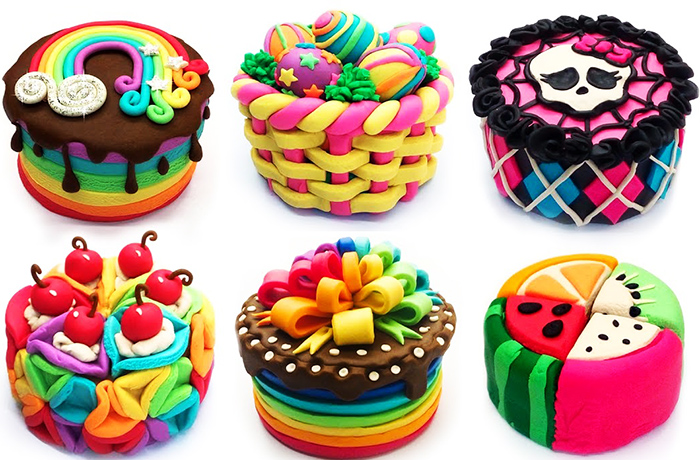
They look at an object and identify one property in it (size, shape or color), on the basis of which they will identify similar objects: for them, a monitor is not part of a computer, but a television, because they have the same shape and can show.
Older children (4-5 years old) already have an idea of size and shape, they can analyze and compare several objects. In senior preschool age, cognitive motivation is formed, which gradually replaces play activities.
Children have a dominant visual perception, it is important for them to see what is being told. Therefore, any creative work needs a model.
Preschoolers quickly get tired due to insufficient development of analyzers and weak hand-eye coordination. They get bored doing one activity for a long time. This is indicated by constant impatience and unwillingness to wait.
Modeling has a calming effect on the child. The classes help develop persistence in achieving goals and the ability to see things through to the end.
In addition, modeling classes contribute to the development of:
- coordination of movements, ability to control hands;
- good visual memory, attention;
- figurative thinking, creativity and imagination: the child reproduces familiar and imaginary images;
- intelligence: this is the ability to analyze, synthesize and generalize information, and also, to some extent, massage certain points on the hands while working with plasticine;
- attention and memory;
- patience and perseverance: to reproduce a complex object in detail, you need to work patiently and carefully, otherwise nothing will work.
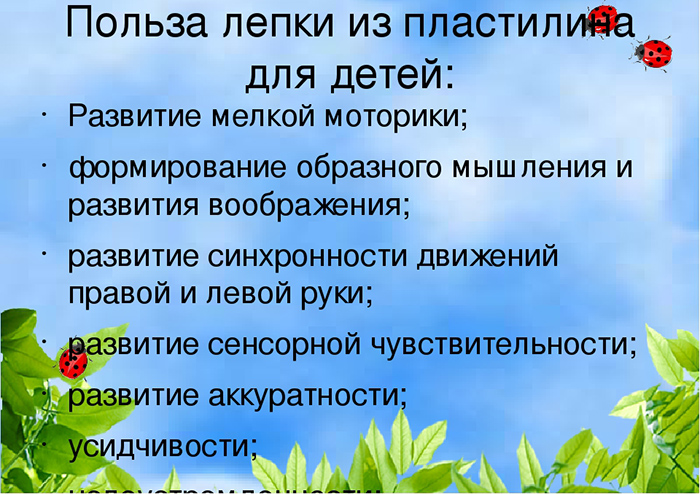
During the classes, the child develops the skill of creative activity. If he likes to sculpt, he will truly create, creating not only familiar images, but also imaginary ones.
Constant failures can lead to the formation of low self-esteem: if a child fails at something, he will refuse to do such tasks. To form adequate self-esteem, it is important to use the situation of success. In this regard, a unique type of activity is modeling with plasticine: if the result of the work is not satisfactory, it can always be redone.
Basics of modeling with plasticine
Before you start modeling, you need to interest the child in this type of activity. If he is interested, he will try to make the image as bright and accurate as he saw it.
How to interest a child
The first lesson is usually devoted to getting to know a new material – plasticine.
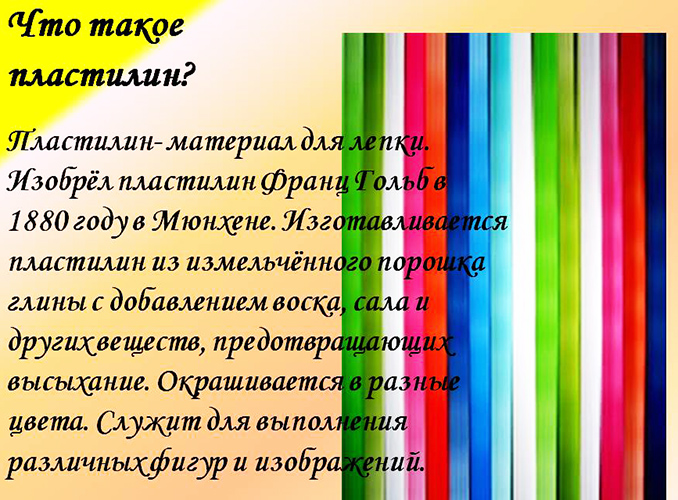
During this lesson the child:
- gets to know plasticine by touch, draws conclusions: the material is soft, flexible, easily wrinkled and smoothed out;
- learns to knead plasticine in his hands;
- pinches off pieces and puts them back together, concludes that the parts can be put back together into a whole;
- practices making flagella, a ball, and a flat cake from a ball.
In the following classes, they begin to model simple items. After mastering the basic parts from plasticine, you can move on to creating complex objects consisting of several parts. Such a step-by-step mastery of the plastic material is necessary in order to form the child's interest in modeling.
Children of different ages can mold identical objects from plasticine. Only the complexity of the created images will depend on the child's capabilities. For example, the pupils of the younger group will make a simple cake consisting of one thick cake and several decorations - balls.

Older children will make a multi-layer cake consisting of several flat cakes and decorate it with simple details. Preschoolers of older groups will make a complex variation of the product. In order to solve more developmental tasks during the lesson, you need to carefully prepare for it, think through the organization of the work process.
Organization of the work process
Before the lesson, it is necessary to prepare the workplaces of the teacher and children. It is important that the table where the sample of work will be shown is clearly visible from any child's place. You can arrange the desks in a semicircle, with the teacher's desk in the center. With this arrangement, the teacher will be able to freely approach any student to help.
The first stage of the lesson – the organizational moment – helps prepare children for work and motivate them for further activities.
Here it is advisable to use various entertaining materials:
- simple poems on the topic of modeling;
- didactic and verbal games (for example, "Karavai");
- riddles;
- logical tasks.
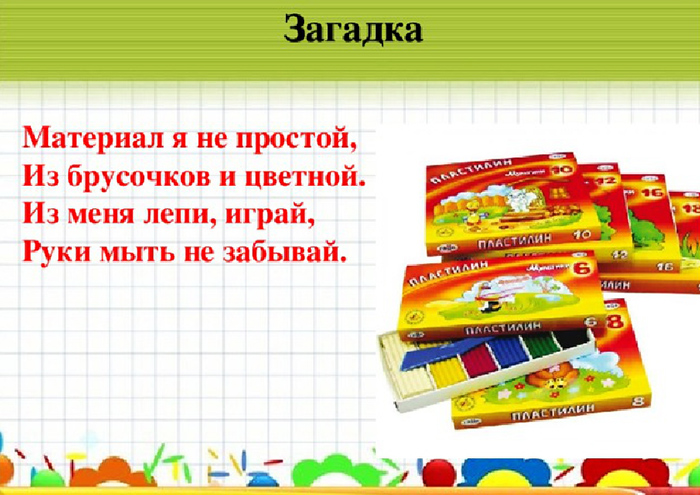
You can motivate children using a problem situation:
- Children 3-4 years old: help a toy. For example, bake a cake for a teddy bear whose birthday it is (he forgot to buy one).
- Children aged 5-6: helping the teacher. For example, the teacher decided to open a pastry shop and needs to prepare many different cakes for sale, but there is very little time. Children help an adult make cakes, and then act out the situation in the pastry shop with the created products.
- Children aged 6-7: helping someone who can't do it. For example, a doll wants to make a cake for her friend, but she can't. "Let's teach the doll!" says the teacher and suggests recalling the process of making the product. The children first tell the process of making the cake, and then show how it is made.
The next stage is examining finished works in the form of drawings or crafts. Children, under the guidance of the teacher, highlight the similarities and differences of different products: all cakes consist of cakes and cream, differ in decorative elements, color. Step-by-step planning of future work is outlined (what to do first, what - then).
Then the teacher starts showing a sample of the work with a detailed explanation. For junior and middle groups, this stage is mandatory. In senior groups, only samples of finished work can be shown if independent activity of children is expected, based on already developed skills and familiar modeling techniques.
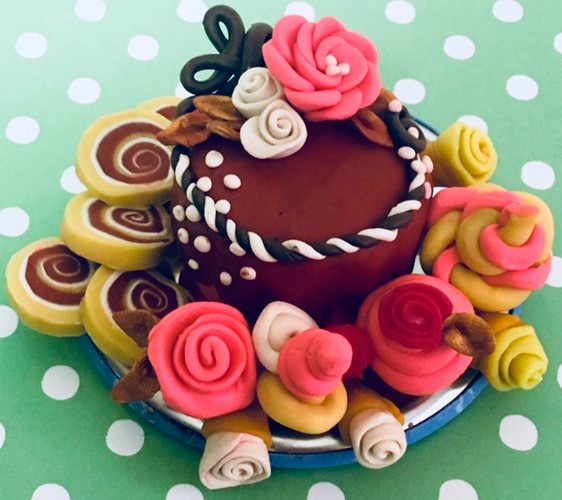
The teacher intervenes in the creation of a child's masterpiece only at the child's request. This is how the preschooler develops independence. It is imperative to note what worked out, advise what to change. The lesson can be completed with an exhibition of works and, of course, gratitude from those who asked for help.
What can be used for modeling cakes
The materials and tools that will be needed during the lesson must be prepared in advance.
For making cakes you can use:
| Materials and tools | Explanation |
| Plasticine | It is better to use medium softness: hard plasticine will take a long time to knead, and too soft plasticine will stick to your hands and leave marks on the parts. |
| Glass, stick, toothpick | They are needed to cut plasticine and draw details, make jagged edges, holes, and give shape to the product. |
| Smooth board | It will help you keep your work table clean and make smooth, burr-free balls and sausages. |
| Beads and rhinestones | To decorate the finished product. |
| Syringe without needle | It will help to make ideal flagella from plasticine. You can take syringes of different volumes to make flagella of different thickness. |
| Textured sheets, fabric | If you place a flat cake on the fabric and press it lightly, a pattern and beautiful roughness will appear on it. |
Plasticine can be replaced with salt dough or clay. But it should be taken into account that the dried product, unlike plasticine, cannot be cut into even pieces.
Having prepared the work area, they begin the actual sculpting.
How to make a cake from plasticine
A plasticine cake for children aged 3-4-5-6 will be difficult to make and will allow you to choose a colour scheme. For children in younger groups, the teacher will cut the plasticine into pieces in advance.
Middle-aged children divide the finished pieces (the teacher first cuts off the necessary part from a large block) into 2-3 parts. Older preschoolers choose plasticine and cut off the necessary part from a whole block themselves.
Step-by-step “recipe” for making a plasticine cake for children of the younger group:
- Knead the largest piece of plasticine well.
- Roll it into a ball.
- Flatten the ball into a thick flat cake – the cake is ready.
- Roll small pieces into balls and decorate the cake with them.
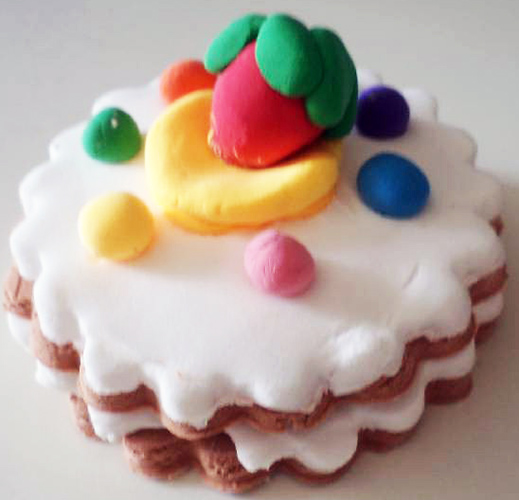
To add texture, you can use a stack (make notches on the sides), and decorate the top with simple flagella.
Stages of cake making in the middle group:
- Knead the pieces of plasticine and make flat cakes out of them. These will be the cake layers and the cream layer.
- Place the flatbreads in a specific order (crust – layer – crust – layer).
- Decorate the finished product according to your own ideas.
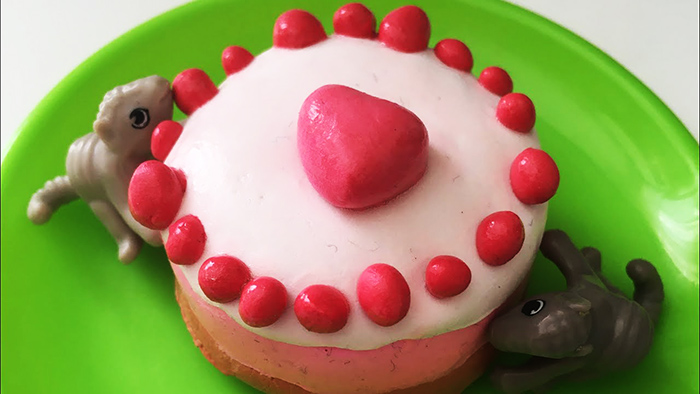
To decorate, children cut off the necessary part from a large piece of plasticine themselves. Then they roll out balls, make flagella and decorate the cake with them according to their own ideas or a sample.
Making a cake in senior and preparatory groups:
- Make the cakes and cream layer – thick flat cakes. Stack them.
- The top of the cake will be covered with icing. To do this, make a thin flat cake, put it on top and lightly spread the edges down with your finger, imitating dripping icing.
- Decorate the cake as your imagination suggests.
Older preschoolers can make a multi-layer cake. To do this, you need to make cakes of different diameters and lay them on top of each other in decreasing order of this size. Then - decorate.
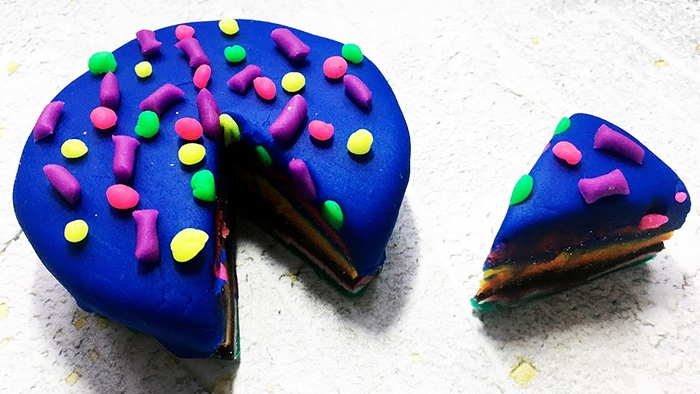
A plasticine cake for children aged 3-4-5-6 can be placed on a toy plate and cut into pieces. The dish can be made from plasticine: mold a flat cake, lift its edges, use a stack to give it shape and squeeze out patterns.
Cake decoration
You can decorate the cake with various plasticine elements:
- small balls and short strands – imitation of confectionery sprinkles;
- roses (the easiest option is to twist a thin, long rope into a spiral);
- various berries: raspberries, blackberries, cherries, strawberries;
- candles, if the cake is made for a birthday;
- sweets: candies, marshmallows, lollipops.
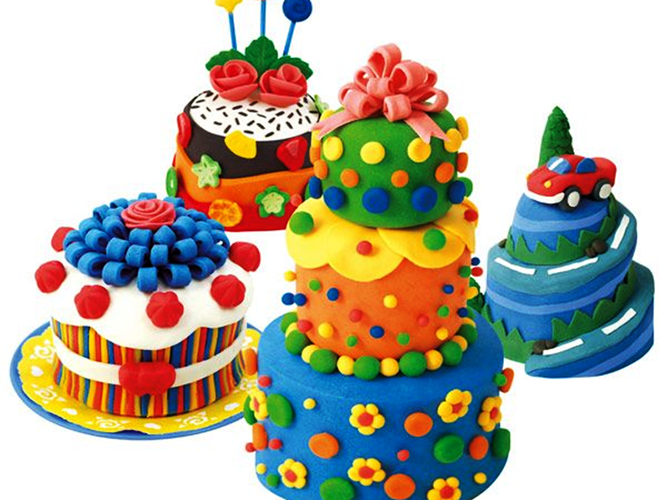
For decoration you can use beads, seed beads, rhinestones of different sizes and colors, and real confectionery sprinkles.
Cake Sculpting Ideas
A plasticine cake for children aged 3-4-5-6 years can look different.
There are many ideas for making this confection:
- Cake "Berry and marshmallow". You can offer to make it to children from the middle group.
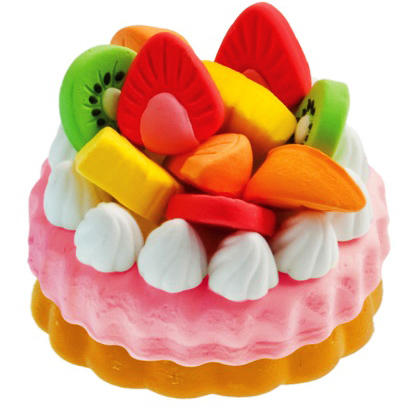
- Cake "Flower basket" (preparatory group).
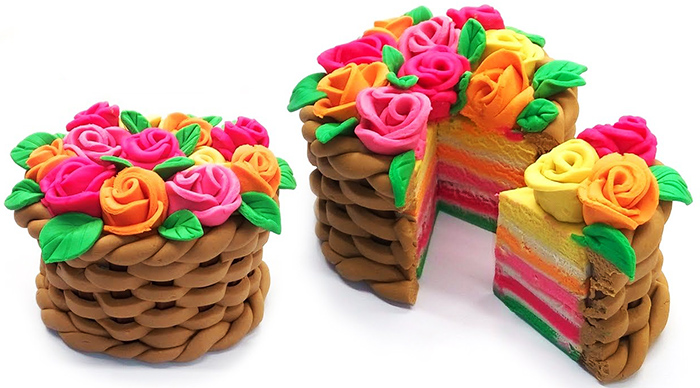
- Cake "Berry Basket". Children of older groups of kindergarten will be able to make it.
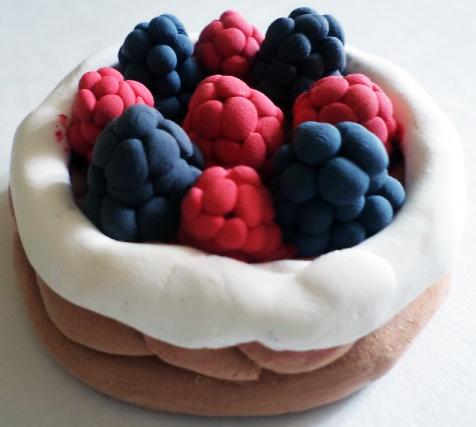
- Cake "Bouquet of daisies" for older preschoolers.
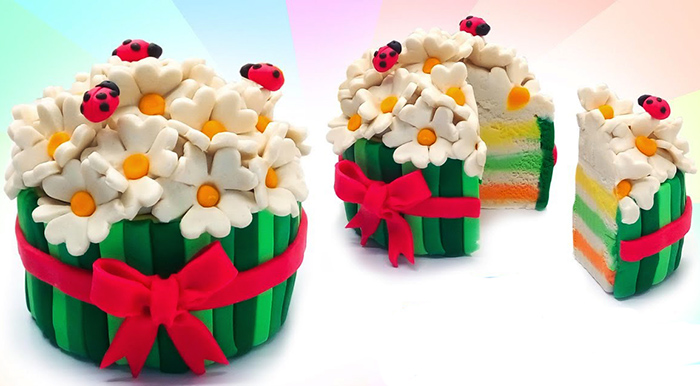
- Rainbow cake.
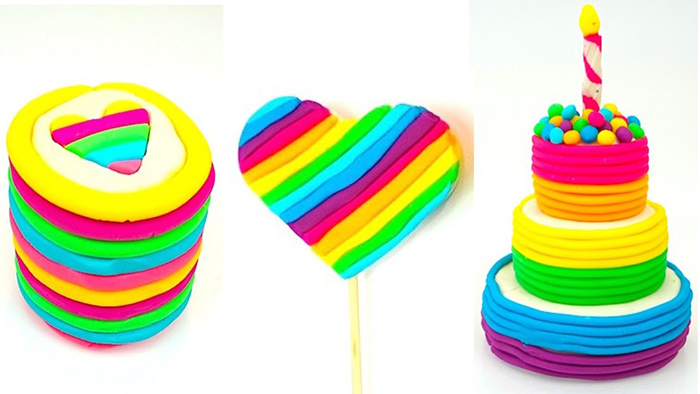
- A complex cake called "Sea Wave" for the most assiduous and stubborn preschoolers.
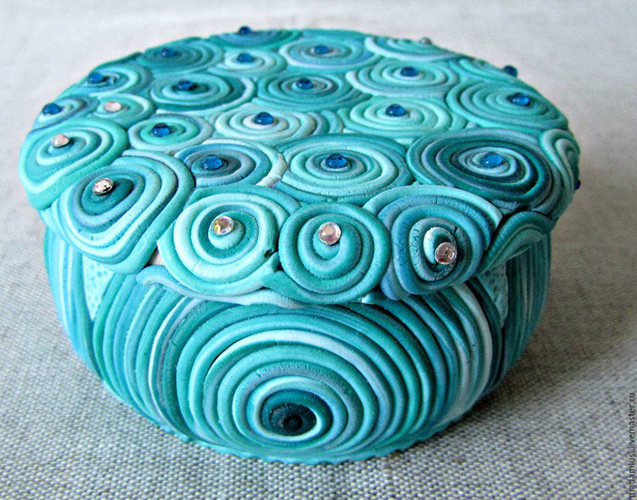
There are many variations of cakes, but the best one is the one that the child made himself.
Recommendations from psychologists and teachers
Modeling classes help to harmonize the child’s internal state, which is why psychologists recommend them as plasticine therapy.
The desire to create, to create new images contributes to self-expression and self-knowledge of children. After all, it is very interesting to be able to do something complex and unusual. The realization that you have done something complex forms faith in your abilities, forms adequate self-esteem.
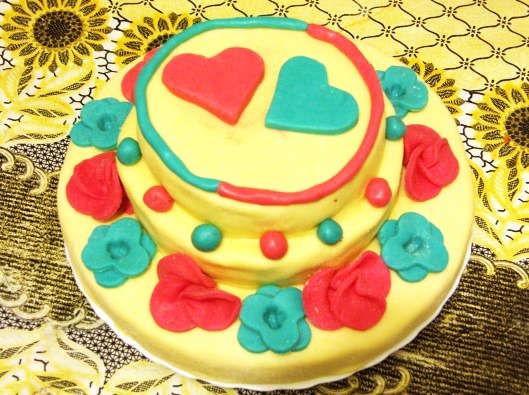
Teachers recommend carefully thinking through the methods and techniques for working with children of different ages. After all, the success of educational work depends on this. In order for the knowledge acquired by preschoolers to be conscious and deep, it should be included in the educational process, activating their thinking with questions and tasks.
Preschool children should be given free topics to work on. When making a cake from plasticine, you can offer different variations of the finished confectionery product, differing from each other not only in color, but also in shape and size. Only freedom of action and choice can form independence and creative activity in children aged 3-4-5-6 years.
Video about cake making
Master class on making a three-tiered cake from plasticine:
